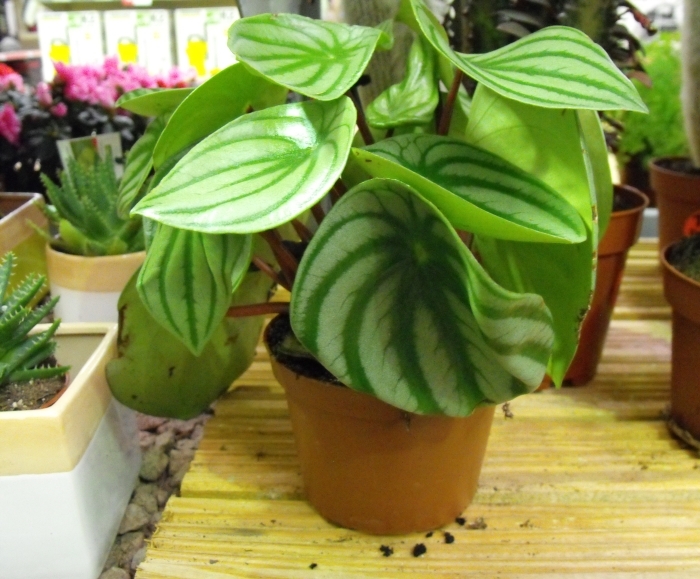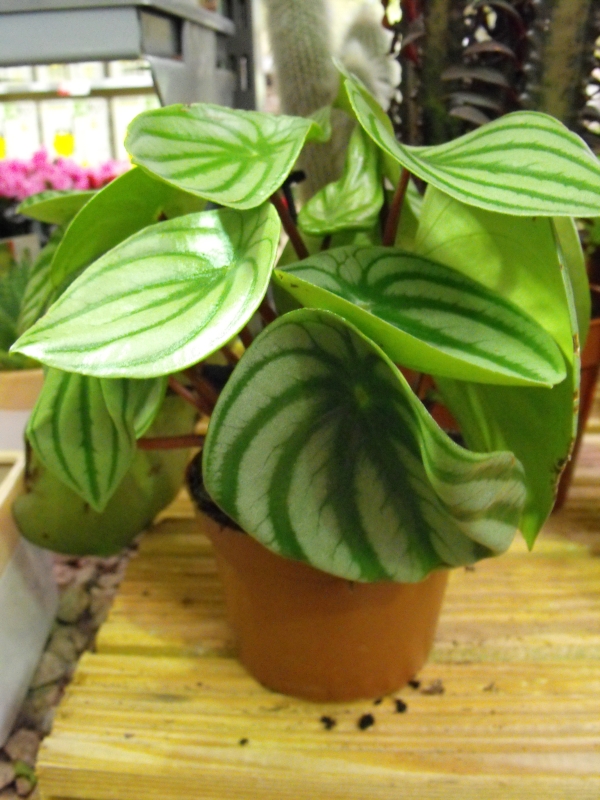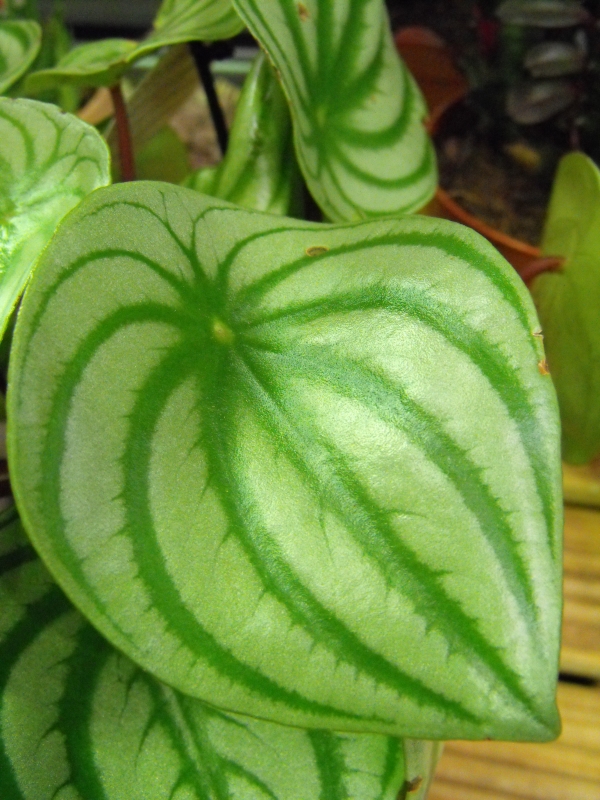





A native to South America the P. argyreia is a small plant grown for it's attractive leaves. They grow up to 12 inches tall and the mini watermelon peperomia only grows up to 6 inches. Because of their small bushy rosette appearance they are best suited when grown outdoors as a ground cover or grouped together with other plants indoors.
Foliage: For the size of this plant as a whole - the leaves are fairly large. These peltate leaves (stem attached centrally) are kind of oval in shape and display an outstanding mixture of green and silver stripes. The leaves have a fleshy feel to them that are attached to thin non-woody red stems.
Flowers: Non showy flowers can appear during summer on slim stalks that are greenish in color. They are not even worth a mention if a grower is looking for attractiveness in flowers.
Care level and growing: These are very easy to grow and can make a good plant choice for the beginner. Keeping to the basics of care instructions will allow these plants to thrive. I would display them close to other plants that have similar care needs to help them look more attractive, otherwise they can look a bit isolated because how small they are. They can be placed in a planter and look great, but you will need to make sure other plants share the same care needs.



Copyright © www.100flowers.win Botanic Garden All Rights Reserved